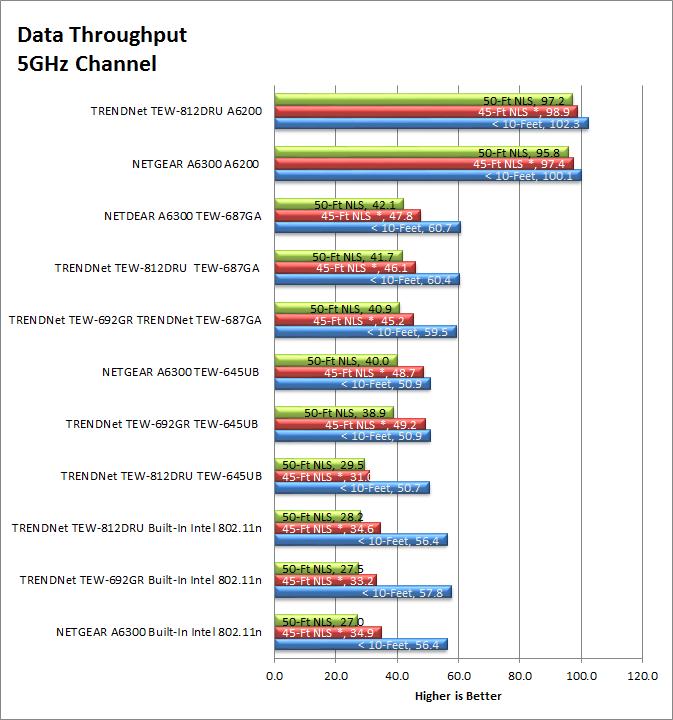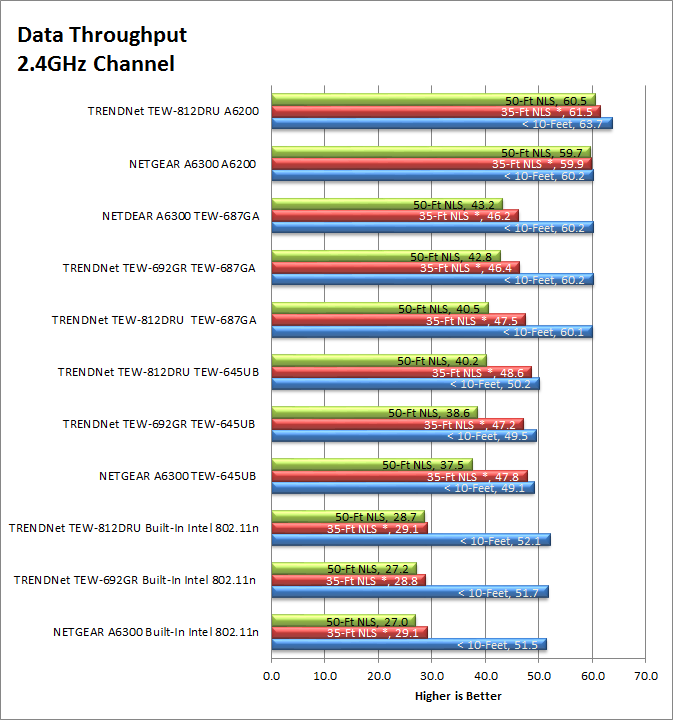Performance -
For our performance testing with the TEW-812DRU we needed to use a new adapter (one we have covered before) the NETGEAR A6200 Dual Band 802.11ac USB adapter. We tested this with the NETGEAR A6300 along with our usual suspects (the built in Intel NIC etc). Using this router we were able to test both the 2.4GHz band and the 5GHz bands and also show off the speed of 802.11ac. Unfortunately we only have two wireless routers that are capable of hitting the 802.11ac speeds, but we are working on getting a larger cross section of products for you.
As you can see the performance of the TRENDNet TEW-812DRU is very impressive when you are running an 802.11ac adapter. You also get solid performance from traditional 802.11n adapters on both the 2.4GHz and 5GHz channels. Performance wise you would not be in a bad spot if you picked up the TEW-812DRU and set it up in your network.
Reception -
The reception on the TEW-812DRU was very solid. We were able to maintain 5GHz 802.11ac speeds out to about 75 feet from the access point (through cinderblock walls). Now it is important to remember that reception is a two part process. Your access point can have great transmission power and good antenna, but if your adapter does not then things are not going to go so well. We saw this come into play when using the built in wireless card. As its range is not that great. When we dropped in the NETGEAR A6200 with its extended antenna and better power the range was much greater. The same thing happened with the TRENDNet TEW-805UB.
Link Speed -
Link speed is one of those things that we cover, but do not put a lot of stock in if you are using wireless. I have seen a link show at one speed, yet I was getting much slower. However as it is nice to cover we will do so here. The TEW-812DRU was able to handle connections at 450Mbps on both the 5GHz and 2.4GHz channels running 802.11n. To get this you will need to make sure that your adapter supports this though. Running 802.11ac we saw 867Mbps with the A6200 and 1300Mbs running the TEW-805UB simply because of the USB type used (the A6200 uses USB 2.0 and the TEW-805UB uses USB 3.0).
Real World Traffic -
In terms of real-world traffic the TEW-812DRU does well, you can get an average of 30MBps that is Megabytes per second here which is a little slower than the link would have suggested The conversion is roughly 241 Mbps for the connection. However this is real world traffic and a simple bench mark. The transfer rate is close to what we see over a 1Gbps wired connection although the speeds do fluctuate a little more on the wireless network than you would see over a wired network.




